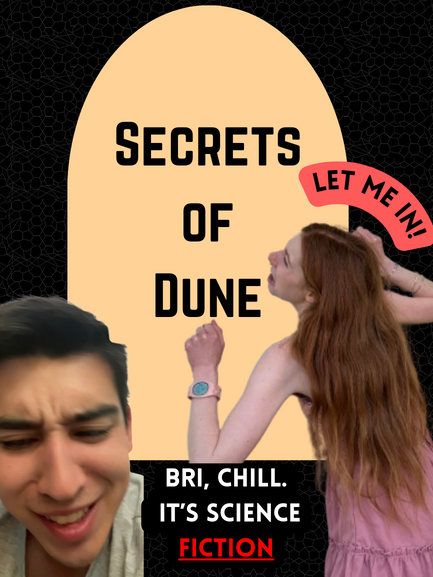Dune. I spent a week buried in Frank Herbert's novel that took the world by (sand)storm. Immediately watched Dune part 1 (which I honestly would not of liked if I never read the book). Then on Tuesday finally saw Dune part 2 at AMC.

To put it simply, I LOVE Dune. Frank Herbert's ecological imagery had my inner Earth Science/Biology nerd grasping onto every word. But something really, and I mean REALLY bothered me. And that is the fact that water kills. More specifically, Herbert writes that the Fremen (the native people of Arrakis the Desert planet) have long recognized that water is poisonous to Shai-Hulud, the sandworm. But water is life. Life IS water. All organisms need water I double, triple checked, Frank why?!!


Author Frank Herbert obviously is out there to torture me with all that is left unknown. If you're Alix then you may emphasize fiction in science fiction. But something felt off to me. Frank did too much research into Desert ecology and there's too much accuracy for me just to push the world of Dune aside as only fiction. I had to know the science and thus the secrets of Dune.
And so I started digging, looking closer, and researching. And the thing is, sandworm life DOES rely on water. In fact it stems from it. After careful analyzation I think I finally cracked it. May I present to you, the sandworm life cycle- that is indoubtedly reliant on the one thing all life is reliant on...water.

Therefore, sandworms, no matter how 'god-like', they may seem, still require water just like any other organism. In fact I'd argue what makes the Maker so God-like in the first place is its manipulation of water, not lack of it. In Children of Dune it's revealed that the sandtrout (thus sandworm) are an invasive species:
"The sandtrout was introduced here from some other place. This was a wet planet then. They proliferated beyond the capability of existing ecosystems to deal with them. Sandtrouts encysted the available free water, made this a desert planet and they did it to survive. In a planet sufficiently dry, they could move to their sandworm phase."
Leto II Atreides
Children of Dune
It is a well-established fact that Arrakis used to be a planet with water. This is evident through the presence of salt pans as confirmed by Imperial Planetologist Pardot Kynes. Therefore, it was the introduction of sandtrout that essentially transformed the complete ecology of an entire planet!



Mind blown!! I cannot wait to see what you do with Science minus the fiction!!
Thank you Daddy yo!
Great post. I argue that water may not be poisonous but can be dangerous in excessive amounts. Exhibit A
(Couldn’t insert photo…bummer) but a certain female adult landed herself in the hospital for consuming to much water! 🤦🏻♀️
You got a good point anything can be poisonous in high amounts like radioactive bananas lol!